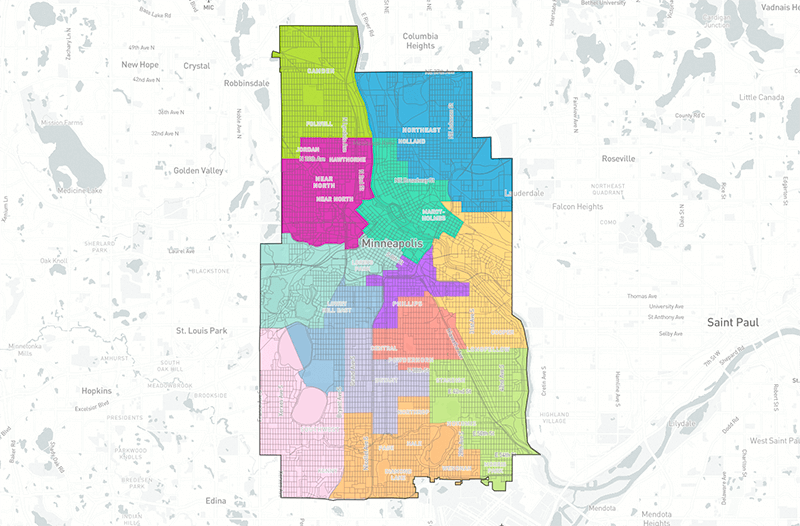It happens after every federal census: The shifting of boundaries of U.S. House and Senate districts within Minnesota and the wards and park districts of Minneapolis. It’s a process that occurs every ten years.
In Minneapolis, the purpose is to make sure each of the 13 City Council members represents an equal number of citizens. The ideal balance would be slightly more than 33,000 per ward, plus or minus 5%. Based on the 2020 Census, Ward 3, with 43,652 residents, is overpopulated and Ward 8, which encompasses the Kingfield and Bryant neighborhoods in South Minneapolis, has just 28,311. Ward 3, which has experienced a boom in apartment building downtown and a large influx of new people, is certain to undergo redistricting.
In terms of Minneapolis parks, Northeast and Southeast neighborhoods make up District 1. The ideal number of residents is 71,659 for each of the six park districts. District 1, with 81,309 people, has the highest population while South Minneapolis has the lowest with 65,257. Brian Rice, attorney for the Minneapolis Parks and Recreation Board (MPRB), noted at a Nov. 17 virtual public hearing that the Park Board does not have the authority to change district boundaries. He cautioned any redistricting changes must not dilute the MPRB’s mission of providing equitable park access to all citizens.
The Minneapolis Charter Commission creates the boundary maps based on input from a 24-member advisory group. The Charter Commission has the final say on the maps, but the City Council is required to pass an ordinance or resolution that defines new boundaries and designated polling places.
Similarly, the Redistricting Group submits maps to the MPRB for review and comment, but the Charter Commission makes the final decision.
Citizens, too, can have their say
One proposal for the Third Ward would take the Mill District out of the ward and make it part of Ward 6. Ward 9 would lose the Central neighborhoods and run east to the Mississippi River, vacuuming up parts of Ward 6. Another proposal would move the Sheridan neighborhood from Ward 3 to Ward 1.
Kayseh Magan, a member of the Redistricting Group, submitted a proposal that moved the Mill District back to Ward 3 and added the rest of Elliot Park neighborhood to Ward 6. “The residents of downtown want to remain in W3 and adding them to W6 would change the character of W6,” he wrote. “My proposed map increases the overall Black population and the Black voting age population in W6. I am proposing this map after listening to many East African residents in W6 who fear their votes would be diluted if we added parts of downtown to W6. As an East African resident living in W6, I share these concerns.”
His plan met with approval from people in other wards.
You, too, can participate in the redistricting process. The City of Minneapolis website has a page where you can access tools to draw your own district maps and submit them to the Charter Commission. (Go to https://www.minneapolismn.gov/government/programs-initiatives/redistricting/.) The site also provides minutes of previous Redistricting Group meetings and lists upcoming meeting dates and times. A second public hearing will be held Wednesday, Dec. 15 at 7 p.m. You can watch it on Comcast Channel 14 or 799; City Council TV (https://www.minneapolismn.gov/government/meetings/city-council-tv/); or the City’s YouTube Channel (https://www.youtube.com/user/cityofminneapolis).
Below: Shown in current maps: Top, Ward 3 (aqua), Ward 1 (blue) and bottom, Park District 1 may undergo some changes. (Provided graphics)

